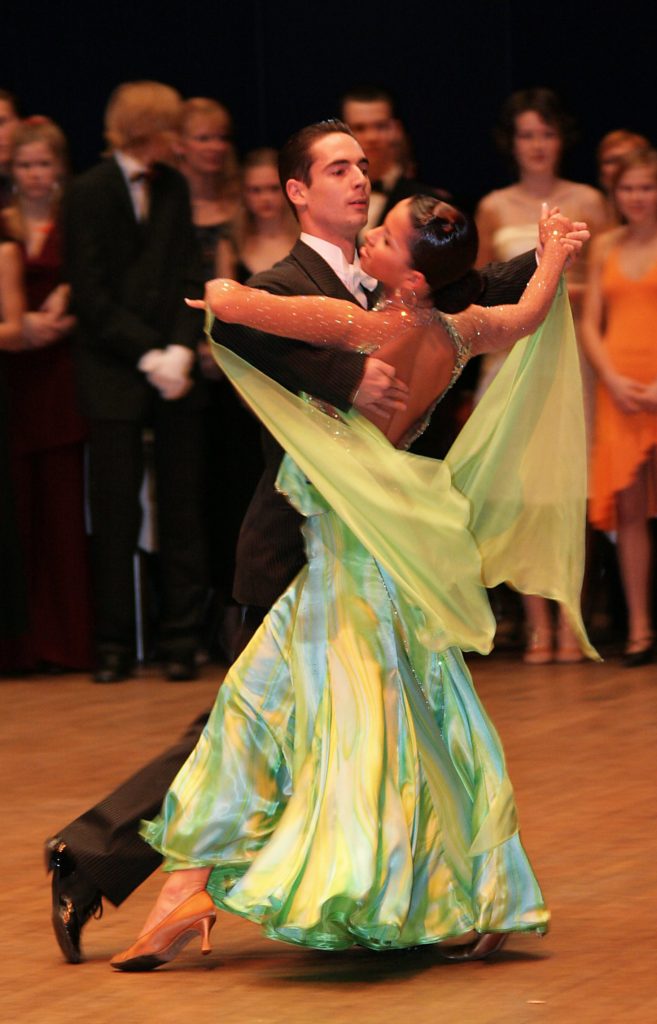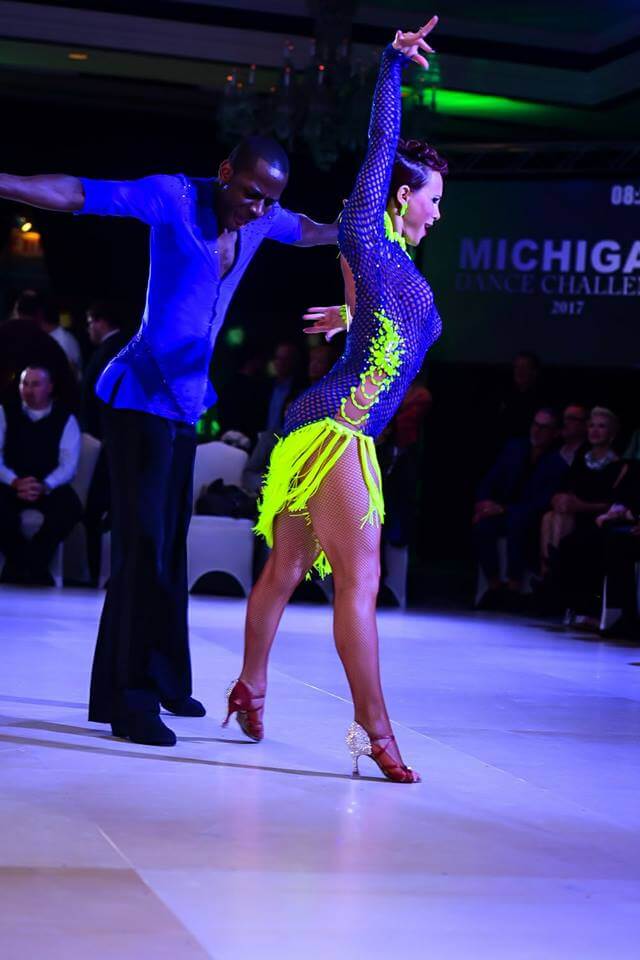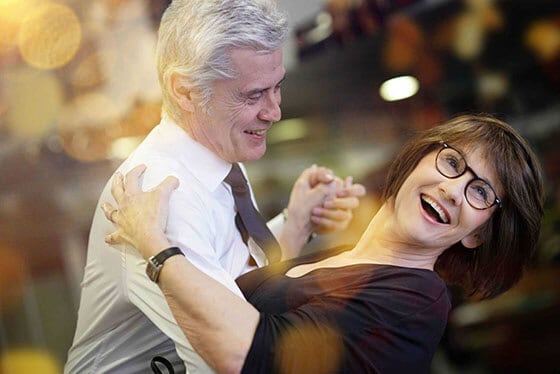Viennese Waltz is one of the most beautiful dances ever created! When done well, dancers make it look so effortless and elegant, but don’t let that fool you. This dance is not for the very beginner! Most instructors will make sure you have plenty of training in other ballroom dances such as the Waltz before ever teaching the Viennese Waltz. Because of its constant rotation and speed, there is not much room for error, and it requires great technique. Without proper training, the Viennese Waltz can be very challenging and uncomfortable to do. I don’t say this to scare you, but to help you understand the importance of the training required prior to learning this dance. Anyone can learn to do the Viennese Waltz and I encourage you to do so!
Below is a look into what I will be covering in this post!
· History and Characteristics
· Musical Information
· Posture
· Learning the Basics
· Dance Frame
History and Characteristics
Due to the popularity of Waltz, Viennese Waltz was born in the early 1800’s on the operatic stages of Vienna when composers increased the tempo of Waltz music. The faster music called for dancers to have better technique and endurance to keep up. Just like the Waltz, the Viennese Waltz was considered immoral and was only permissible for married women to dance. Despite such controversies, the Viennese Waltz was very popular and continued to grow in Europe and America until the First World War.
Viennese Waltz is a very elegant and magical dance that is characterized by its turns, speed, sway, and rise and fall. However, because it is almost twice as fast as the Waltz, the rise and fall and Sway are significantly less in this dance. Today, you will see this dance on competition floors in the American Smooth and International Standard categories, dance shows on tv (dancing with the stars, etc..), and in a social setting at your local studio.

Musical Information
To give you an idea of how fast this dance is compared to Waltz, The Waltz ranges from 30-32 MPM and the Viennese Waltz is 54 MPM! That is 216 beats per minute! The time signature for any Waltz is ¾ time which means there are 3 quarter notes to a measure of music. Therefore, when you count this dance you will count either to 3 or 6. Typically, the beat value is 1, meaning you will spend 1 beat on each step you take. For example, you would take three steps in three beats of music. For the dance to flow nicely with the music, you will want to begin dancing at the beginning of a new phrase and a phrase of music in Waltz is a minimum of 6 counts. Most music is structured similarly, so there will be about a four-phrase intro and then you would begin dancing. However, some songs have an eight-phrase intro. Over time, you will learn to anticipate how long the intro will be. I recommend listening to Viennese Waltz songs to become more familiar. I have listed a few below to get you started.
This one has a 4-phrase intro: https://youtu.be/oD1nQ1FWpoc
This one has an 8-phrase intro: https://youtu.be/rtOvBOTyX00
This is a nice slow one, and good for beginner Viennese Waltz dancers with a 4-phrase intro: https://youtu.be/7VBex8zbDRs
This one has an 8-phrase intro: https://youtu.be/0cNhpIzUreI
Posture
Posture is one of those things that we all know is good for us, but a lot of us are sitting at computers all day with our shoulders hunched forward, completely unaware of our alignment! Not only does having good posture make you feel better and exude more confidence, but it also plays an important role in dancing. Dancing in good postural alignment allows us to move effortlessly from foot to foot without pushing or pulling on our partner. So, what is good postural alignment? It’s when our main blocks of weight are stacked on top of each other. Our main blocks of weight are the head, shoulders, rib cage, and hips. Your head should be back and your chin level with the floor, your shoulders should be down and back ( but don’t squeeze the shoulder blades together), your rib cage should be flat with your core engaged, and the hips should be neutral. A great way to find your perfect alignment is to stand against a wall with your heels touching the wall, head resting on the wall, and try to minimize the space between the small of your back and the wall. Once you walk away, try to maintain the position as you walk forward, backward, and sideways. For this to become more natural, I recommend practicing good posture everywhere you go – not just on the dance floor!
Learning the Basics
In Viennese Waltz, we use three basic rhythms: straight, hesitation, and canter. Straight rhythm is what I described earlier in the musical information – it’s when you step on each beat of music. You will count 1 2 3, 4 5 6 and step six times. Hesitation rhythm is when you take 1 step per three beats of music. This rhythm is perfect for catching your breath! Canter rhythm is a little more challenging. You will step on beats 1 and 3, only taking two steps per three beats of music. In the beginning level of Viennese Waltz, you will use all three rhythms, but today, I am only going to cover straight and hesitation.
Hesitation Rhythm
The first pattern I will talk you through is the Balance Steps. Balance Steps are danced forward, side, and back and are a great way to begin your Viennese Waltz before going full speed into straight time. Below, I break this step down for both leaders and followers.
Leaders: Begin with your left foot free and step forward on count 1 and hold for counts 2 and 3, then step back with your right foot on count 1 and hold for counts 2 and 3. Next, step side with your left foot on count 1 and hold counts 2 and 3 then step to the right on count 1 and hold counts 2 and 3.
Followers: Begin with your right foot free and step back on count 1 and hold for counts 2 and 3, then step forward with your left foot on count 1 and hold for counts 2 and 3. Next, step side with your right foot on count 1 and hold for counts 2 and 3 then step to the left on count 1 and hold for counts 2 and 3.
Notice that you are only changing weight (taking a step) on count 1 and holding for two beats before stepping again. When stepping, it’s important to keep your feet connected to the floor rather than picking them up and placing them. When taking a forward step, move from your heel to the ball and when taking a backward step, move from the toe to the heel. On side steps, you will move from the toe to the heel as well.
Practice the Balance Steps a few times, and then give it a try with music to get a better feel for the rhythm.
Straight Rhythm
The first pattern I recommend learning in straight rhythm are the 5th Position Breaks. This is a stationary pattern that helps you to get acclimated to the speed of Viennese Waltz without as much effort as a traveling pattern. Below is the breakdown of this pattern for both the leader and follower.
Leaders: Begin by taking your left foot to the side on count 1, then the right foot will step behind the left foot with the toes turned slightly out and weight goes only onto the ball of the foot on count 2, then replace your weight forward onto the left foot on count 3. Next, repeat the exact same movement to the other side for counts 4, 5, and 6.
Followers: Begin by taking your right foot to the side on count 1, then the left foot will step behind the right foot with the toes turned slightly out and weight goes only onto the ball of the foot on count 2, then replace your weight forward onto the right foot on count 3. Next, repeat the exact same movement to the other side for counts 4, 5, and 6.
Keep in mind that we don’t rise above standing height in the Viennese Waltz. Therefore, when you step onto the ball of your foot on count 2, try not to pop up high onto your toes. For this to be possible, always keep your knees slightly flexed when stepping with your toes.
Practice this multiple times and then give it a try with music. Start with a slower Viennese Waltz, and when you are ready, try it with a full-speed Viennese Waltz song.
Dance Frame
Dance frame is one of the most important elements of partner dancing. It’s through a frame that we can connect and communicate with our partner what to dance. Because the Viennese Waltz is fast and turns a lot, it requires partners to have a great frame with close or body contact. To get into a closed position frame, you will begin standing facing your partner about an arm’s length away. To invite your follower in, the leader will extend their left arm out in front towards their partner, palm facing forward while lifting their right arm out to the side. To accept the invitation, the follower will respond by extending their right arm out in front and placing their right hand in the leader’s left, while extending their left arm out to the side. From here, the follower will take two steps forward (slightly off-set to the right of the leader) to close the gap between the partnership. At this point, the leader will bend his right arm and place his right hand on the follower’s left shoulder blade, where her arm meets her shoulder, making sure to keep his fingers together. The follower will then bend her left arm and place her middle finger and thumb on either side of her partner’s left bicep. Both partners should be stretching leftwards (the follower more so than the leader), and maintain this positioning throughout the dance. The frame should feel light and connected.
Here is a quick video of what a basic Closed Position frame looks like: https://youtu.be/mkKnqS20WwQ
For your entertainment, here is a video of the pros dancing International Viennese Waltz in a competition: https://youtu.be/H-X57fdNvCg
As mentioned earlier, this dance requires lots of training and I recommend you continue to improve your slow Waltz, so that Viennese Waltz will be easier to learn and you will be better equipped to do the techniques required. Today’s post barely scratches the surface of this magical dance, but I hope it has inspired you to continue your dance training so that you can become the dancer you are meant to be!
Thank you for reading! If you have any questions, please don’t hesitate to ask in the comments below




